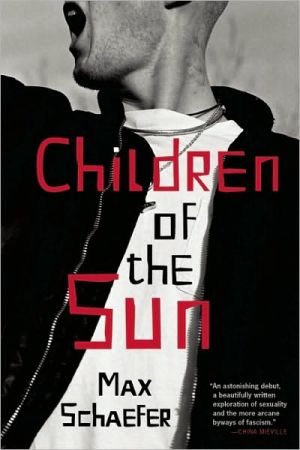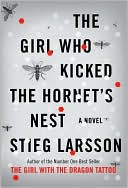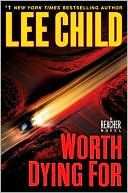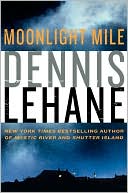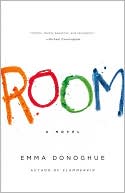Children of the Sun
1970: Fourteen-year-old Tony becomes seduced by Britain’s neo-Nazi movement, sucked into a world of brutal racist violence and bizarre ritual. It’s an environment in which he must hide his sexuality, in which every encounter is potentially deadly.\ 2003: James is a young writer, living with his boyfriend. In search of a subject, he begins looking into the Far Right in Britain and its secret gay membership. He becomes particularly fascinated by Nicky Crane, one of the leaders of the neo-Nazi...
Search in google:
1970: Fourteen-year-old Tony becomes seduced by Britain’s neo-Nazi movement, sucked into a world of brutal racist violence and bizarre ritual. It’s an environment in which he must hide his sexuality, in which every encounter is potentially deadly.2003: James is a young writer, living with his boyfriend. In search of a subject, he begins looking into the Far Right in Britain and its secret gay membership. He becomes particularly fascinated by Nicky Crane, one of the leaders of the neo-Nazi movement who came out in 1992 before dying a year later of AIDS.The two narrative threads of this extraordinarily assured and ambitious first novel follow Tony through the seventies, eighties, and nineties, as the nationalist movement splinters and weakens; and James through a year in which he becomes dangerously immersed in his research. After risky flirtations with individuals on far right websites, he starts receiving threatening phone calls—the first in a series of unexpected events that ultimately cause the lives of these two very different men to unforgettably intersect.Children of the Sun is a work of great imaginative sympathy and range—a novel of unblinking honesty but also of deep feeling, which illuminates the surprisingly thin line that separates aggression from tenderness.Publishers WeeklySchaefer obsessively maps in his debut the overlapping disintegration of skinhead subculture and rise of gay subculture in London. Tony Crawford, a violent and secretly gay skinhead in the 1970s and '80s, appears in nonlinear fragments that intersect with those of the narrator, James, who, in 2003, is supported by his parents while he researches a screenplay about notorious homosexual skinhead Nicky Crane. By the time James begins a relationship with skinhead Adam, the skinhead style has been annexed from fascism in the name of fashion; indeed, Adam is distressed by James's excessive interest in neo-Nazis. Schaefer, meanwhile, charts Tony's odyssey through the collapse of neo-Nazi skinhead culture--his first boyfriend was a skinhead and he followed suit, starting down a path that led to prison and deterioration, surviving just long enough to become an impoverished cultural relic and an answer to the mystery James is chasing. Losing large chunks of regurgitated political history would have allowed Schaefer's complex parsing of turn of the century identity politics to shine. Schaefer is obviously a talented writer, but one who needs to be editorially reined in. (Sept.)
\ Publishers WeeklySchaefer obsessively maps in his debut the overlapping disintegration of skinhead subculture and rise of gay subculture in London. Tony Crawford, a violent and secretly gay skinhead in the 1970s and '80s, appears in nonlinear fragments that intersect with those of the narrator, James, who, in 2003, is supported by his parents while he researches a screenplay about notorious homosexual skinhead Nicky Crane. By the time James begins a relationship with skinhead Adam, the skinhead style has been annexed from fascism in the name of fashion; indeed, Adam is distressed by James's excessive interest in neo-Nazis. Schaefer, meanwhile, charts Tony's odyssey through the collapse of neo-Nazi skinhead culture--his first boyfriend was a skinhead and he followed suit, starting down a path that led to prison and deterioration, surviving just long enough to become an impoverished cultural relic and an answer to the mystery James is chasing. Losing large chunks of regurgitated political history would have allowed Schaefer's complex parsing of turn of the century identity politics to shine. Schaefer is obviously a talented writer, but one who needs to be editorially reined in. (Sept.)\ \ \ \ \ Library JournalMoving from 1970, when central character Tony is 14, to the early 1990s, this first novel views the history of the violent and racist British skinhead movement from the perspective of its gay subculture. Interweaving fact and fiction across time, Schaefer tracks the internecine battling of the neo-Nazi movement's ever-changing factions (he intersperses much period journalism between his chapters) and the surprisingly unchanging lives of its members. Contrasted with Tony's story is that of James, a young gay writer who's attempting to write a screenplay about a particularly notorious skinhead, Nicky Crane, who died of AIDS in 1993 after spending most of his two decades closeted in the movement. VERDICT Schaefer has taken on the difficult task of trying to keep his readers interested in characters many might find repugnant and to locate some dramatic movement in lives that seem to change little over time. That Schaefer succeeds as well as he does is a testament to his skill. Still, at 400 pages, this will be a heavy slog for many.—Lawrence Rungren, Merrimack Valley Lib. Consortium, North Andover, MA\ \ \ Kirkus ReviewsTwo men come of age in different eras of Britain's brash, violent and highly neurotic gay skinhead culture.\ Schaefer's debut novel is built on two alternating narrative threads. The first focuses on Tony, a teenager whose sexual awakening occurs at nearly the same time he becomes involved in England's white-power movement of the '70s. The scene is defined by hypermasculine trappings—heavy boots, violence and aggressive punk rock—and though homosexuality within the tribe is an open secret, Tony has to be careful while negotiating it. The second thread, set in 2003, concerns James, a young writer researching the very movement that Tony was involved in. Alternating between the two time periods is a revealing conceit: It shows how time transformed skinhead culture from something that was brutally racist to a relatively benign sex fetish. Where Tony furtively negotiated hookups in bathroom stalls and participated in group melees with blacks and Asians, James spends time on personals sites online where men merely play-act as Nazis. Still, the role-playing has a virulent power of its own, and as James becomes more involved in his research, his friends have legitimate concerns that he's gone native. The bookis based on plenty of research—the text is interspersed with reproductions of fanzine articles, flyers for white-power bands like Skrewdriver and news stories, with a particular focus on the life of Nicky Crane, a neo-Nazi who had a complicated relationship with the movement before dying of AIDS in 1993. That historical verisimilitude is matched by Schaefer's skill at showing how racists come to rationalize their hate. Too often, though, James's dialogue lapses into history lessons about the white-power movement, and in the same way that James's obsession overwhelms his friendships, secondary characters in the book—musicians, party leaders, boyfriends—rarely feel like more than tokens. By the novel's end, Tony and James's lives have moved in surprising ways, but the subplots and detail sap some of the climax's dramatic power.\ A daring exploration of a touchy subject, but with less emotional force than its setting would suggest.\ \ \
